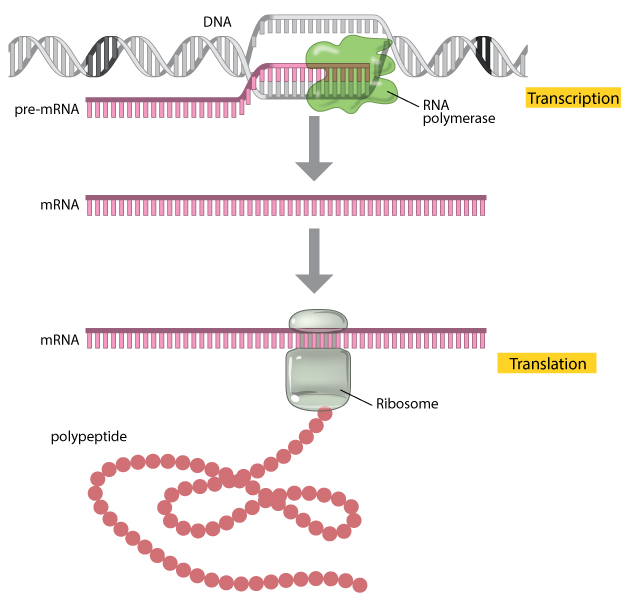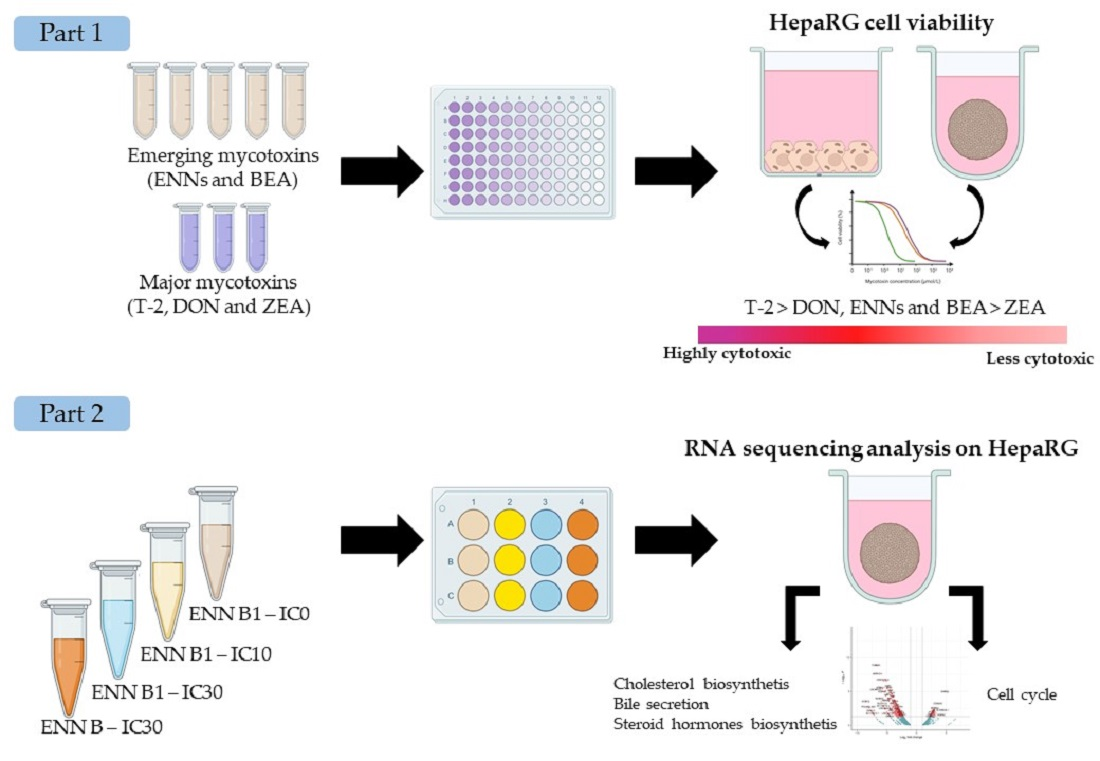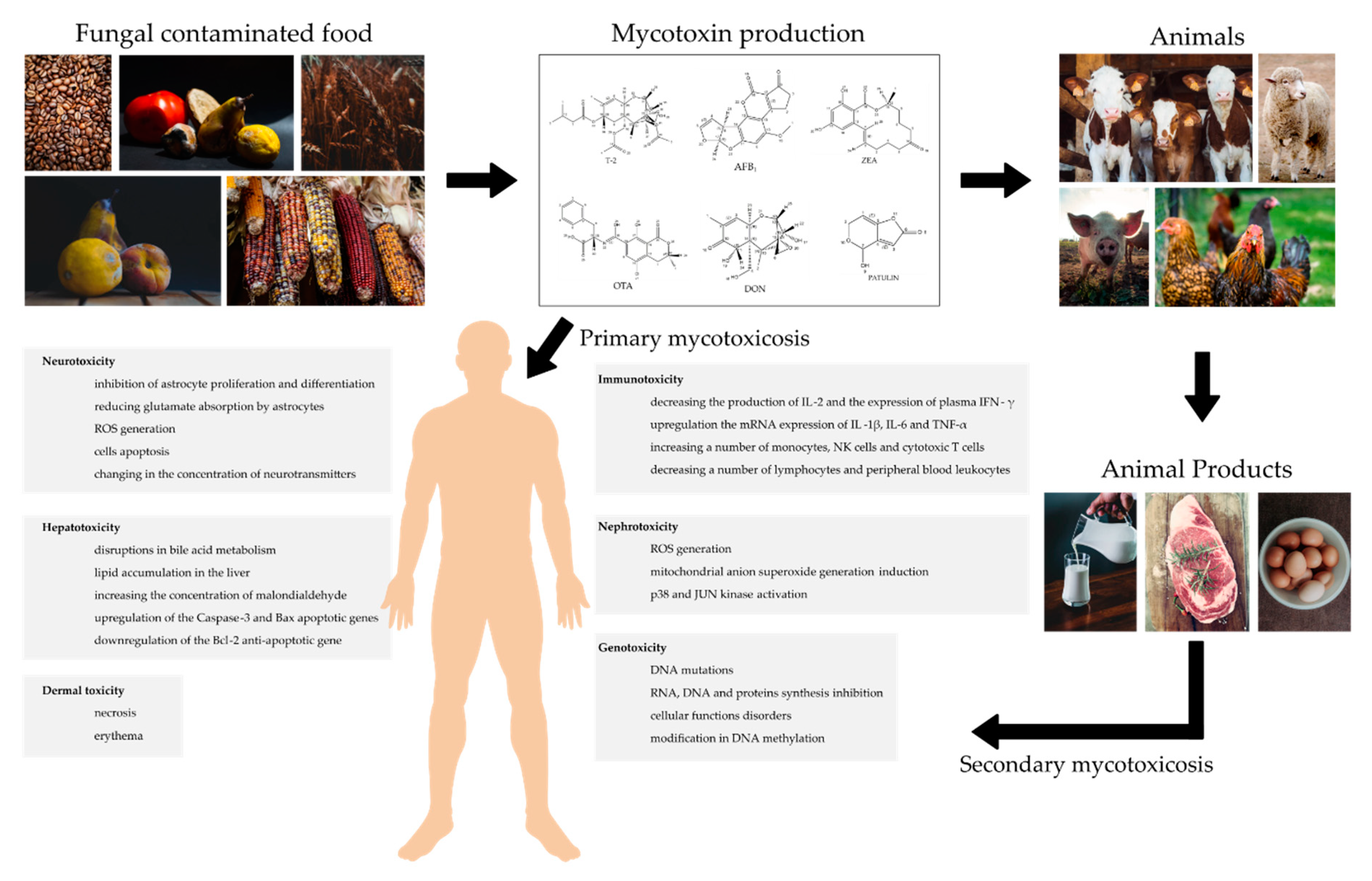Gene Expression and Mycotoxins
Gene expression in mycotoxin production is a complex process where moulds activate specific genes to create toxic compounds, influenced by environmental factors and regulated by various genetic mechanisms. Understanding this process is crucial for developing strategies to combat mycotoxin contamination in food and its effects on human and animal health.
DNA to Protein Process

The journey from DNA to protein in mycotoxin production involves several key steps:
- Transcription: The mold’s DNA, which contains the genetic instructions for mycotoxin production, is transcribed into RNA. This is akin to making a photocopy of specific pages from an instruction manual.
- Translation: The RNA then serves as a template for the mold’s cellular machinery to synthesize proteins. These proteins can either be the mycotoxins themselves or enzymes that facilitate their production
- Regulation: Environmental factors such as temperature, humidity, and nutrient availability can influence whether the mold activates or deactivates the genes responsible for mycotoxin production.
Understanding these steps is crucial for developing methods to control mycotoxin contamination, such as identifying molecules that inhibit the regulatory mechanisms of mycotoxin biosynthesis.
Mycotoxin Production Regulation


Regulation of mycotoxin production is a complex process influenced by various environmental signals and genetic regulators. Pathway-specific regulators directly activate the target mycotoxin gene cluster, while global and epigenetic regulators respond to environmental cues. This hierarchical regulatory network allows molds to adapt their toxin production to different conditions. For example, low-frequency magnetic fields can inhibit citrinin contamination by reducing the expression of the pathway-specific regulator gene ctnA in Monascus purpureus.
Understanding these regulatory mechanisms opens up new possibilities for controlling mycotoxin contamination, such as developing specific inhibitors that target key regulatory genes without affecting fungal growth.
Understanding these regulatory mechanisms opens up new possibilities for controlling mycotoxin contamination, such as developing specific inhibitors that target key regulatory genes without affecting fungal growth.
Gene Expression Applications


Understanding gene expression in mycotoxin biosynthesis has practical applications in food safety and agriculture. Researchers can use this knowledge to develop targeted control strategies, such as identifying molecules that inhibit pathway-specific regulators of mycotoxin production. For example, molecular docking methods, commonly used in drug discovery, can predict ligand-target interactions to find novel antimycotoxinogenic compounds. Additionally, studying gene expression helps explain how environmental factors influence toxin synthesis, leading to innovative control approaches like using low-frequency magnetic fields to inhibit citrinin contamination in Monascus purpureus. These advancements offer promising avenues for more effective methods to prevent mycotoxin contamination in food and feed.
Health Impact of Mycotoxins


Exposure to mycotoxins can have severe health consequences for humans and animals. These toxic compounds can penetrate cells and reach the cellular genome, causing significant damage. Some mycotoxins, like trichothecenes, are potent inhibitors of protein synthesis in eukaryotic cells, interfering with initiation, elongation, and termination stages. For instance, deoxynivalenol, a common trichothecene found in grains, can induce nausea, vomiting, and diarrhea when ingested. At the cellular level, mycotoxins can inhibit DNA and RNA synthesis, disrupt mitochondrial function, and trigger programmed cell death responses. Understanding these health impacts is crucial for developing effective strategies to mitigate the risks associated with mycotoxin contamination in food and feed.
Environmental Triggers for Mycotoxin Genes


Environmental factors play a crucial role in triggering mycotoxin gene expression in fungi. Temperature, water availability (water activity), and pH are key abiotic factors that influence mycotoxin biosynthesis. For instance, suboptimal concentrations of preservatives like calcium propionate can increase ochratoxin A production in Penicillium verrucosum by activating the otapksPV gene. Similarly, osmotic stress strongly induces the fum1 gene in Fusarium verticillioides, even when fungal growth is inhibited. Climate change scenarios, including elevated CO2 levels and increased temperatures, may stimulate mycotoxin production in species like Aspergillus flavus, despite minimal effects on growth. Understanding these environmental triggers is essential for predicting and controlling mycotoxin contamination in food and feed under various stress conditions.

